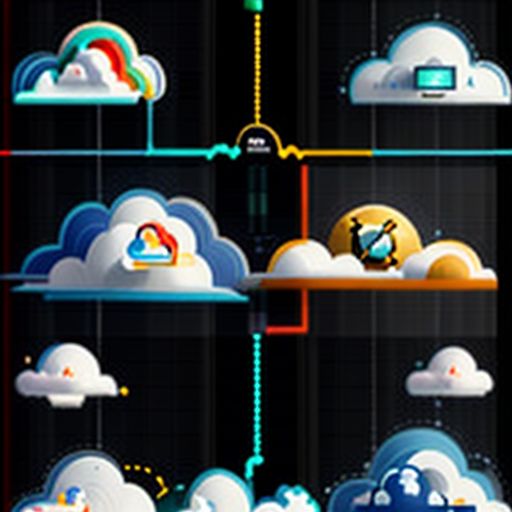When Did Cloud Computing Start? A Journey Through Time
Ever wondered when the cloud, as we know it, came to be? The concept of cloud computing, with its promise of on-demand resources and seamless scalability, has become so ingrained in our digital lives that it’s easy to forget it hasn’t always been around. So, when did cloud computing start?
The answer, like most things in tech history, isn’t a simple one-liner. It’s a fascinating journey through decades of innovation, with roots stretching back further than you might think.
Delving into the Dawn of Cloud Computing
While pinpointing the exact birthdate of cloud computing is tricky, most experts agree that the seeds were sown in the 1960s. This era, marked by the rise of mainframe computers, saw the emergence of time-sharing, a precursor to cloud computing.
Time-Sharing: The Precursor to the Cloud
Imagine multiple users sharing the resources of a single, powerful computer – that’s time-sharing in a nutshell. This innovative concept allowed universities and businesses to maximize expensive computing power, foreshadowing the core principle of cloud computing: resource pooling.
The 1990s: Laying the Foundation
Fast forward to the 1990s, and the stage for cloud computing was set. The rise of the internet, coupled with the development of virtualization technology, paved the way for a new era of computing.
The Internet: Connecting the Dots
The internet revolutionized communication and data transfer, creating the necessary infrastructure for cloud computing to flourish. Suddenly, geographical barriers were less of an obstacle, opening up possibilities for remote access and collaboration.
Virtualization: The Game-Changer
Virtualization technology allowed a single physical server to host multiple virtual machines, each running its own operating system and applications. This breakthrough dramatically improved resource utilization and flexibility, paving the way for cloud computing’s scalability.
The Early 2000s: Cloud Computing Takes Shape
The turn of the millennium marked a significant turning point. Companies like Salesforce, Amazon, and Google started offering cloud-based services, marking the beginning of cloud computing as we know it.
Salesforce: Pioneering Software as a Service (SaaS)
In 1999, Salesforce launched its customer relationship management (CRM) software over the internet, pioneering the Software as a Service (SaaS) model. This groundbreaking move eliminated the need for businesses to install and maintain software locally, making applications accessible from anywhere with an internet connection.
Amazon Web Services (AWS): Ushering in Infrastructure as a Service (IaaS)
In 2006, Amazon Web Services (AWS) revolutionized the industry by launching its Elastic Compute Cloud (EC2), offering on-demand computing resources over the internet. This marked the dawn of Infrastructure as a Service (IaaS), allowing businesses to rent computing power, storage, and other resources as needed.
Frequently Asked Questions about Cloud Computing’s Origins
The history of cloud computing sparks a lot of curiosity. Here are some questions people frequently ask:
Who invented cloud computing?
While no single person can claim credit for “inventing” cloud computing, individuals like J.C.R. Licklider (who envisioned a globally interconnected network of computers) and John McCarthy (who pioneered the concept of time-sharing) played instrumental roles in shaping its foundations.
What was the first cloud computing service?
While Salesforce is widely credited with launching the first successful cloud-based service with its SaaS CRM platform in 1999, some argue that earlier attempts at remote computing, like CompuServe in the 1970s, could be considered early precursors to cloud services.
How has cloud computing evolved over time?
From its humble beginnings as time-sharing on mainframes to the sophisticated cloud platforms we use today, cloud computing has undergone a remarkable evolution. The development of the internet, virtualization technology, and the increasing demand for flexible, scalable computing resources have been key drivers of this evolution.
cloud.ieltssieutoc.com/wp-content/uploads/2024/07/cloud-computing-timeline-669753.jpg" alt="Cloud Computing Timeline" width="512" height="512">Cloud Computing Timeline
Conclusion: Cloud Computing’s Ever-Evolving Story
The journey of cloud computing, from its early conceptualization to its current ubiquitous presence, is a testament to continuous innovation. While we’ve traced its roots, it’s clear that cloud computing’s story is far from over. As technology continues to advance, we can expect even more innovative cloud-based solutions to emerge, further transforming how we live, work, and interact with the digital world.
What are your thoughts on the evolution of cloud computing? Share your insights in the comments below!
